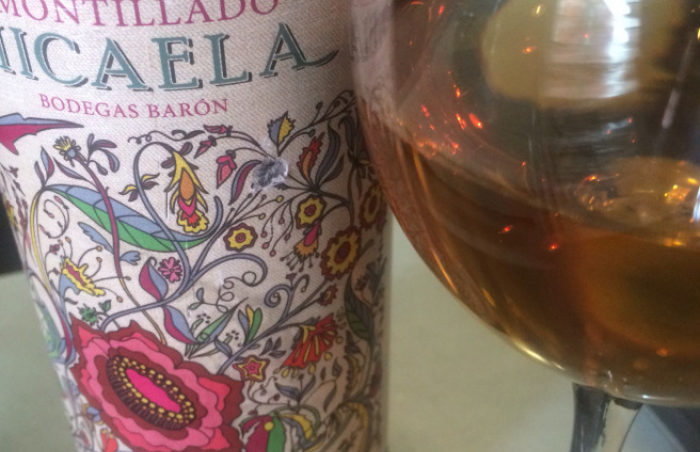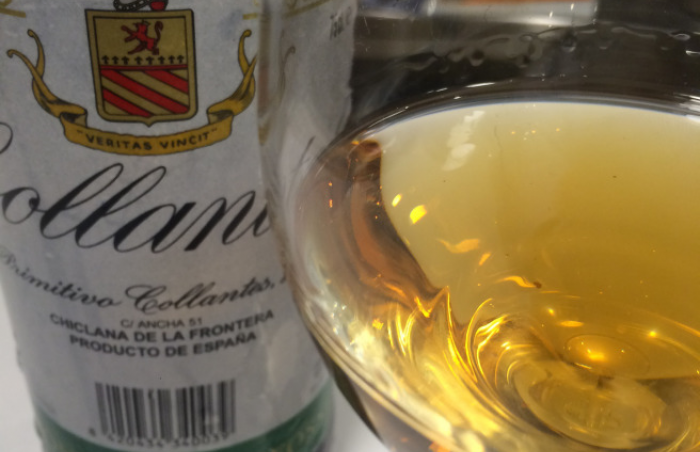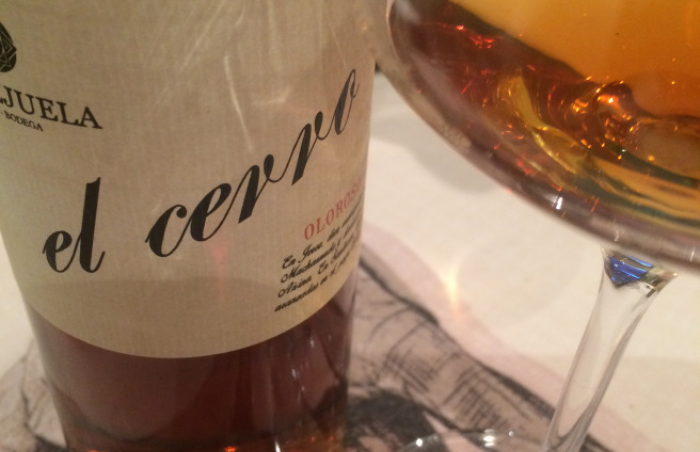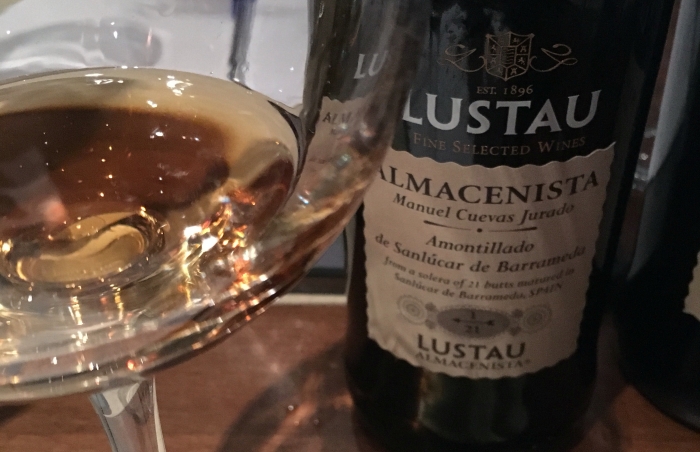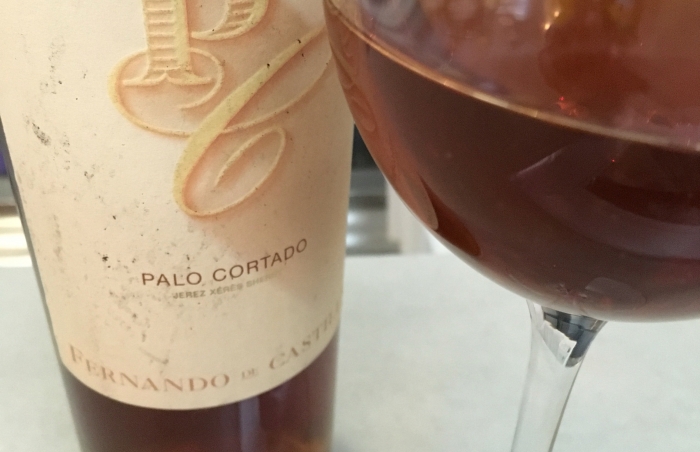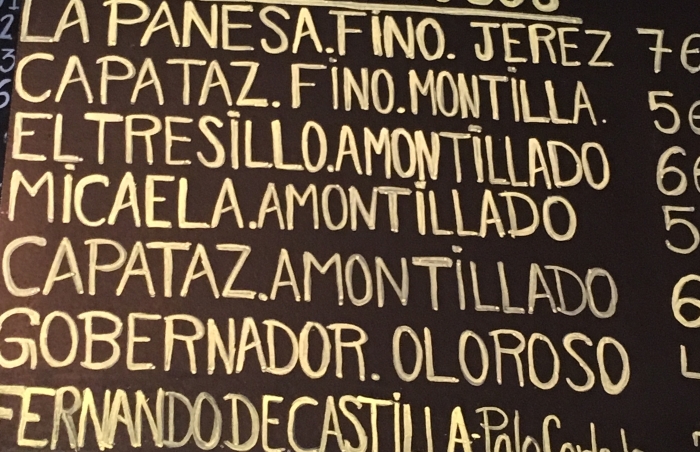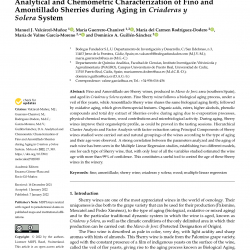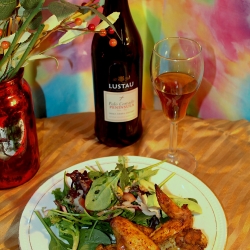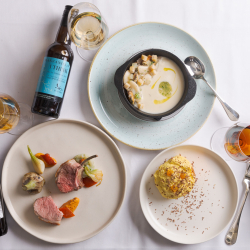Sherry on the wine list
I was having a very enjoyable lunch with a fellow #sherrylover recently in Taberna Verdejo in Madrid, a quite terrific restaurant with no fewer than 26 Sherries and Manzanillas on offer, but as we looked around the tables we realised we were the only people actually drinking them. It got us thinking about what could be done to change this travesty. It occurred to me that while restaurants and sommeliers may know all about the qualities of the wines of Jerez and Sanlucar, they regularly fail to include them on winelists, sometimes focus on the wrong ones, nearly always list them in the wrong place, and sometimes serve them in the wrong glasses. If restaurants and sommeliers are serious about helping their clients to discover these wines a new approach is needed. Here's how I would go about it.
First, include your Sherries and Manzanillas on the wine list. I have come across a strange phenomenon of restaurants that have sherries - even a range of styles - but for some reason those wines do not appear anywhere on the list. They don't fit on the page, or in the categories, or whatever - they just get forgotten. I know of at least four restaurants in Madrid where this applies. Even if it is just the Manzanilla and the Fino by the glass, don't be shy - put them on the list!
Second, don't fixate on aperitifs and digestifs. I'm no expert on the restaurant trade, but I have the impression that one of the main reasons that people decide to go to restaurants is in order to eat food of some kind. As such, your chances of selling them wines will be significantly increased if the wines in question pair well with the food on offer. From this point of view, the wine lists I see around tend to have the wrong emphasis: a lot of high quality yeasty and mineral Finos and Manzanillas at the top; some equally high quality but heavy hitting VOS and VORS at the bottom; but not enough in between. It is easy to see why. Sherries have been seen as aperitifs or wines for sipping after dinner, and the better lists tend to upgrade those offers for the top and tails of the meal. The problem is that these very select wines can be quite expensive and their qualities can make it more difficult to find pairings. By all means cater to Sherry buffs who will prize these special wines, but spare a thought too for the vast majority of thirsty customers looking for something to help wash down their dinner.
Third, invest in some adaptable "midfielders". While a lot of the wine lists I come across are strong in the lightest and the heaviest wines, I find they often lacki many of the best wines to help wash down dinner: the lighter but still tasty "midfielders" like the younger Palo Cortados, Amontillados and Olorosos. These wines have those sweeter notes that accompany most flavours, that little bit of acidity that really helps balance the food, and they are that bit more approachable for non-sherry drinkers. Wines that spring to mind are Emilio Hidalgo's Oloroso Gobernador or Tresillo Amontillado Fino, Baron's Micaela Amontillado, Gonzalez Byass' Palo Cortado Leonor (or the Amontillado Viña AB), Lustau's Amontillado del Puerto G Obregon, Primitivo Collantes' "Fossi" Amontillado Fino, Callejuela's super elegant Oloroso el Cerro, Fernando de Castilla's Antique Palo Cortado ... but this list could go on and on. One of my favourite wine lists in Madrid is that of the Chula de Chamberi, where despite only having seven of these wines by the glass on the list (they have more if you ask - see point one above) those seven wines include four "midfield" gems like the Tresillo, the Gobernador, the Micaela and the Antique Palo Cortado.
Fourth, don't leave Sherries in a corner. Wine lists too often separate the Sherries from the other wines in a way that makes it much harder to see a pairing opportunity. I already mentioned the extreme case where Sherries are kept off the list above, but even when they get on the list they are often in a specific, separate section for "fortified wines" or, even worse "aperitifs" or "sweet wines". If we are serious about treating Sherries and Manzanillas like the high-quality wines they are and getting people to see them as such, we need to break down this wall and set the Sherries free to roam the card. If you have a section of wines by the glass, that is where the Sherries should be. Dividing into white and red? Put my Finos and Manzanillas on the left and the rest on the right please. Dividing your list by regions? Don't forget Jerez and Sanlucar is a region (or regions). A list of wines of the week? Why not include a Sherry? (As they do in the Restaurante Vinoteca Garcia de la Navarra, and some crackers too.) In fact, I for one am the kind of client who likes to try something new, and if an Amontillado was on the list alongside the reds and whites, what's to say I wouldn't give it a go?
Fifth, serve them by the (right) glass. It may seem surprising that I didn't start my list with serving by the glass but to be honest that is the one problem that I tend not to have: almost everywhere I know that serves Sherry offers them by the glass (in fact a case could be made for offering them by the bottle - particularly crowd pleasers like the ones listed above). However, very often the glass used is a "catavinos" or schooner, and this must stop. I am all for tradition, and picturesque traditions don't generally hurt marketing efforts, but I think these glasses are a disaster for selling Sherry. From a technical point of view they are not great for enjoying the aromas and flavours of the wine, and the psychological, aesthetic effect of the much smaller glass, from the point of view of the diner, is terrible. Most importantly, it is yet another suggestion that these are not quite "wines" like the other ones.
Sixth, give us a hand with the pairings. Sherries pair brilliantly with a range of foods, but most customers will not know this, and even if you can't have an expert sommelier or waiter on hand to make suggestions on every occasion, just a couple of words on the list can make a big difference: "Manzanilla X, saline and herbal, perfect with the fried fish"; "Fino X, mineral and nutty, superb with the jamon", "Amontillado Y, refined, salty minerals and caramel, excellent with the artichokes"; "Palo Cortado, refined, spicy and structured, great accompaniment to the steak"; and "Oloroso Z, structured, oaky, spicey, perfect with the callos". You get the idea, right? A lot of top restaurants are already doing something similar to make their lists more accessible to their customers, but Sherry in particular could benefit from this kind of approach.
As you can see, it isn't much of a revolution - they really are just simple steps - and they must be worth trying.
The views and opinions expressed in this article are those of the authors and do not necessarily represent those of El Consejo Regulador.


09 March 2016


